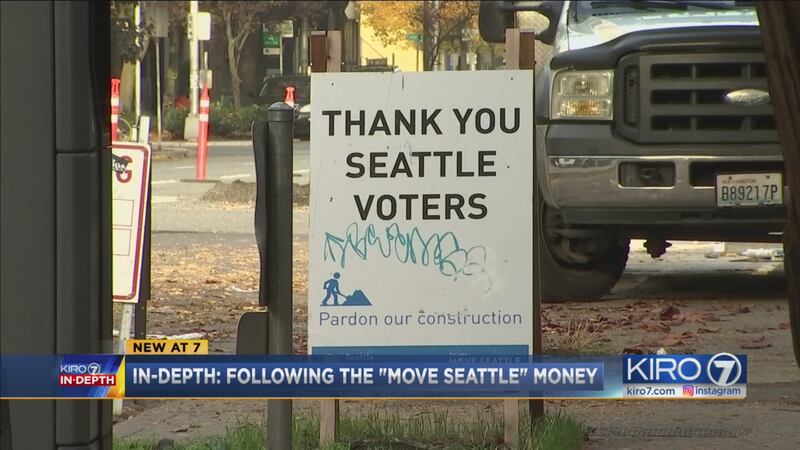The Second Avenue protected bike lane through Seattle's Belltown is getting rave reviews from cyclists who use it.
Planters separate bikes and cars, and there are lots of new traffic signals.
"It's safer, I feel. I like the stoplights that we have at every intersection," said Davis, who stopped to talk during his ride.
The signals account for nearly half the cost of the project, which is coming in at $12 million for the mile-long lane.
Compare that $12 million to a per-mile estimate of $860,000 that the city first expected to spend on bike lanes in the Move Seattle transportation levy, a $930 million property tax measure voters passed in 2015.
While city officials say the Second Avenue bike lane is an outlier in its extremely high cost, it turns out to be just one example of how city officials lowballed cost estimates when they sold the nine-year levy to voters.
"I don't know exactly what drove those (cost estimate) decisions. Would I have done the same decisions? Maybe not," said Goran Sparrman, interim director of the Seattle Department of Transportation.
Sparrman didn't make the Move Seattle mess, but he is tasked with fixing it.
Mayor Jenny Durkan appointed Sparrman after the departure of Scott Kubly, who led SDOT for former Mayor Ed Murray.
Sparrman says SDOT is finishing a close review of the levy, so the city can figure out what it can actually deliver.
"I'd say, another month or two, we'll be in a much better place," Sparrman said.
SDOT has already cut the cost of the bike lanes.
It scaled back plans for eight blocks of bike lanes on Pike and Pine streets, building them for just $300,000.
The city is also figuring out how many sidewalks it can now build and repair, and how it can deliver more RapidRide bus service.
The levy promised seven new lines.
"There will be a RapidRide corridor program and we'll meet that. The question really is: How much of what we'd like to have happen can we afford?" Sparrman said.
As for what went wrong, Sparrman said, in addition to underestimating costs, SDOT wasn't prepared quickly enough to manage a big levy.
Also, construction prices are going up and federal funding is going down.
"I don't want to second-guess the previous administrations in terms of the federal funding assumptions. I think they were probably basing it on what they knew at the time. That's probably what I would have done," Sparrman said.
The city has work groups focused on pedestrians, cycling and transit, which will help figure out what the levy can actually deliver in each of those areas.
This summer or fall, the city will update the list of levy projects.
More news from KIRO 7
- Seattle May Day 2018: What to know about traffic
- Seattle braces for May Day 2018
- May Day in Seattle: Real-time updates, photos and video
- GUIDE: Navigating through May Day 2018
- Police: Boy found safe, Amber Alert canceled in Tacoma
Cox Media Group








